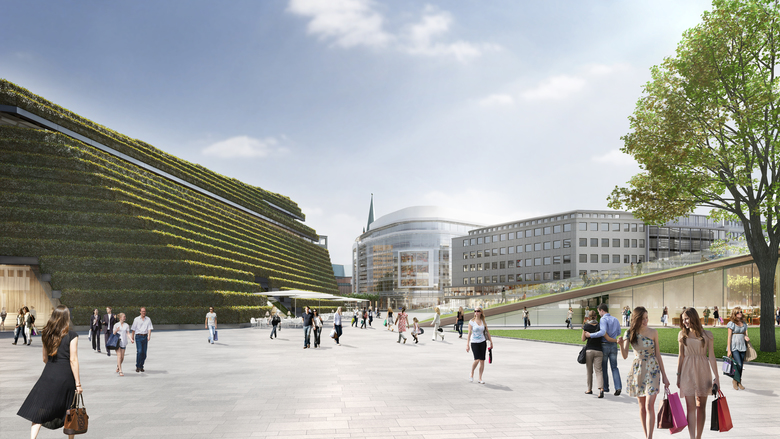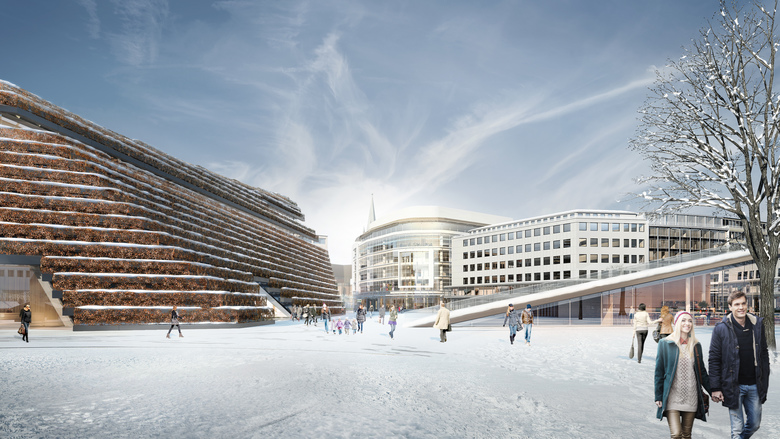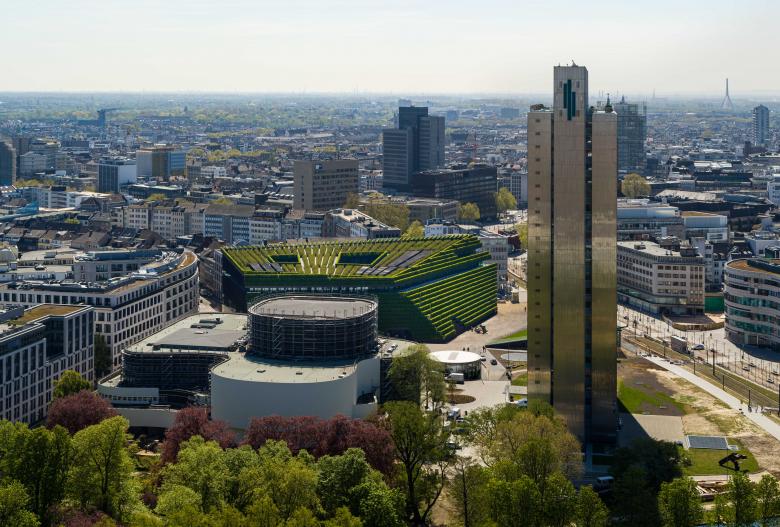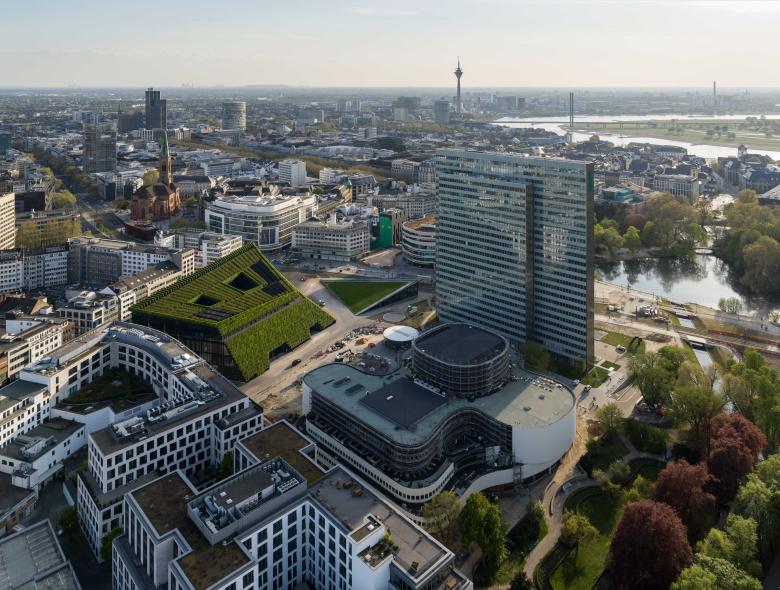KÖ-BOGEN II
Düsseldorf, Germany
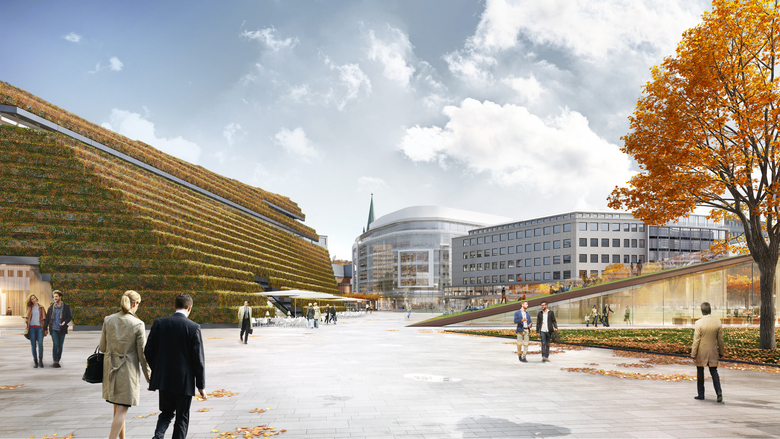
8 kilometres of hornbeam hedges, over 30,000 plants – Europe’s largest green facade is complete. The facade is an essential element of the Kö-Bogen II commercial and office building by ingenhoven architects. The ensemble marks the conclusion of an extensive urban renewal project in the heart of Düsseldorf. It also represents a paradigm shift: from an urban perspective, it signals a departure from the automotive era and a turn towards people-oriented planning. And with Europe’s largest green facade, it offers an urban response to climate change. Giving back as much green as possible to the city is a task that ingenhoven architects have been working on for decades and across different climate zones. With its supergreen® concept, the office is taking a comprehensive approach to sustainability.
Düsseldorf’s new city centre
Today, where an elevated motorway once dominated the landscape, the Hofgarten has moved back into the heart of the city. Kö-Bogen’s sloping green facades face one another in a composition inspired by Land Art. The new building complex oscillates in a deliberate indeterminacy between city and park. The two structures form a dynamic entrance to Gustaf-Gründgens-Platz, which opens up the view to icons of post-war modernism – the clear austerity of the Dreischeibenhaus (1960) and the buoyant lightness of the Schauspielhaus (1970), whose renovation was also undertaken by ingenhoven architects. Kö-Bogen II is a contemporary response to these two historic landmarks, without competing with them. With studies, urban planning concepts, and concrete projects, Christoph Ingenhoven has been pursuing the idea of redesigning the centre of Düsseldorf since 1992.
Going green
The hornbeam was intentionally selected as a native hardwood species that keeps its leaves in winter. A comprehensive phytotechnological concept was developed together with Prof. Dr. Strauch, Beuth University of Applied Sciences, Berlin, to incorporate the hedges into the building design. The greenery improves the city’s microclimate – it protects against the sun’s rays in summer and reduces urban heat, binds carbon dioxide, stores moisture, attenuates noise, and supports biodiversity. The ecological benefit of the hornbeam hedges is equivalent to that of approximately 80 fully grown deciduous trees. This integration of nature into architecture offers a contemporary urban response to climate change.
